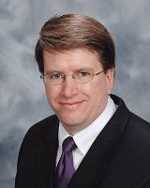Self-Study
Utilizing Economic Indicators to Predict and Analyze Trends
Understand economic indicators, business cycles, financial markets, Federal Reserve policies, and their market impacts.

$290.00 – $320.00
Webcasts are available for viewing Monday – Saturday, 8am – 8pm ET.
Without FlexCast, you must start with enough time to finish. (1 Hr/Credit)
Please fill out the form below and we will reach out as soon as possible.
CPE Credits
10 Credits: Finance
Course Level
Overview
Format
Self-Study
Course Description
Utilizing Economic Indicators to Predict and Analyze Trends, the array of economic indicators and their impact on financial markets might seem overwhelming, filled with complex data and implications. However, after completing Michael Walker‘s course, your perspective on economic indicators will be fundamentally transformed. Acting as a bridge, this leading economic indicators course takes you from a basic understanding to a comprehensive grasp of these indicators. You will learn to identify the phases of the business cycle, understand the role of various economic conditions, and recognize the tools for monitoring economic indicators. This economic indicators course covers the unique characteristics of financial markets, the calculation of interest rates, and the impacts of GDP components. Additionally, you will explore the Federal Reserve’s role in financial markets and how monetary policy affects the U.S. money supply. By the end of this economic indicators course, you will not only be able to calculate unemployment rates and inflation but also interpret the economic impact of various reports, positioning you as a knowledgeable professional capable of navigating the complexities of economic indicators and their implications in the financial world.
Learning Objectives
Upon successful completion of this course, participants will be able to:
Chapter 1
- Identify the four phases of the business cycle
- Indicate how various economic conditions impact the business cycle
- Identify the types of economic indicators that exist and recognize the unique characteristics of each type
- Recognize tools that are currently available to monitor economic indicators
Chapter 2
- Identify the unique characteristics of financial markets
- Recognize the types of financial instruments traded in various financial markets
- Calculate ‘simple’ and ‘compound’ interest
- Identify how a bond’s stated interest rate and its yield-to-maturity impacts the price at which it is traded
- Recognize how interests can vary based on the risk structure of interest rates
- Identify how a yield curve illustrates the term structure of interest rates
Chapter 3
- Identify the components of gross domestic product (GDP) and recognize how economic indicators impact these components
- Calculate GDP
- Identify the difference between nominal and real GDP
- Recognize the economic impact of the GDP report
Chapter 4
- Recognize the role that the Federal Reserve System (‘the Fed’) plays in financial markets
- Identify the tools used by the Fed to conduct its monetary policy and explain how these tools impact the U.S. money supply
- Calculate the two measures used by the Federal Reserve to estimate the U.S. money supply (M1 & M2)
- Recognize the economic impact of the FOMC Statement and the other reports issued by the Fed
Chapter 5
- Calculate the unemployment rate and recognize the inherent limitations of the unemployment rate
- Recognize the characteristics and economic impact of the Employment Situation Report and other employment indicators
- Identify the methods in which consumer sentiment and consumer confidence are measured
- Identify how consumer income and spending is measured and presented on the Personal Income and Outlays report
Chapter 6
- Calculate an annual rate of inflation
- Identify the primary price indexes that measure inflation, including the CPI and PPI
- Recognize the impact that commodities markets have on inflation
- Recognize how economic growth is impacted by labor productivity
- Identify the economic indicators used to monitor productivity
Chapter 7
- Recognize the methods in which the Federal Reserve measures and reports industrial production and capacity utilization
- Identify industrial production indicators that have the most impact on the economy
- Recognize the impact that changes in the housing market has on the economy
- Identify the economic indicators used to monitor the housing market
Chapter 8
- Classify a country’s balance of trade as either a ‘trade surplus’ or a ‘trade deficit’
- Identify scenarios where one country has an absolute advantage and/or a comparative advantage in producing a good over another country
- Recognize the economic indicators used to monitor international trade
Course Specifics
3168026
September 8, 2022
There are no prerequisites.
None
275
Compliance Information
CMA Notice: Western CPE makes every attempt to maintain our CMA CPE library, to ensure a course meets your continuing education requirements please visit Insitute of Management Accountants (IMA)
CFP Notice: Not all courses that qualify for CFP® credit are registered by Western CPE. If a course does not have a CFP registration number in the compliance section, the continuing education will need to be individually reported with the CFP Board. For more information on the reporting process, required documentation, processing fee, etc., contact the CFP Board. CFP Professionals must take each course in it’s entirety, the CFP Board DOES NOT accept partial credits for courses.
Meet The Experts

Michael J. Walker, CPA, is based in New England and has decades of accounting experience in the financial services, information technology services, and construction industries. He has an extensive technical accounting background that includes hands-on experience with U.S. GAAP and International Financial Reporting Standards (IFRS). His expertise includes accounting for financial instruments, securitizations, and other banking products. He graduated from Bentley University with a BS in finance and an MS in accountancy.
Related Courses
-
 Finance
Finance
The CFO Guidebook
Steven M. Bragg, CPA QAS Self-Study
Credits: 22 $440.00
QAS Self-Study
Credits: 22 $440.00$440.00 – $480.00
-
 Finance
Finance
Personal Financial Planning for Accountants
Delta CPE LLC QAS Self-Study
Credits: 17 $391.00
QAS Self-Study
Credits: 17 $391.00$391.00 – $431.00
-
 Finance
Finance
Real Estate Financing and Investment
Delta CPE LLC QAS Self-Study
Credits: 4 $116.00
QAS Self-Study
Credits: 4 $116.00$116.00 – $136.00
